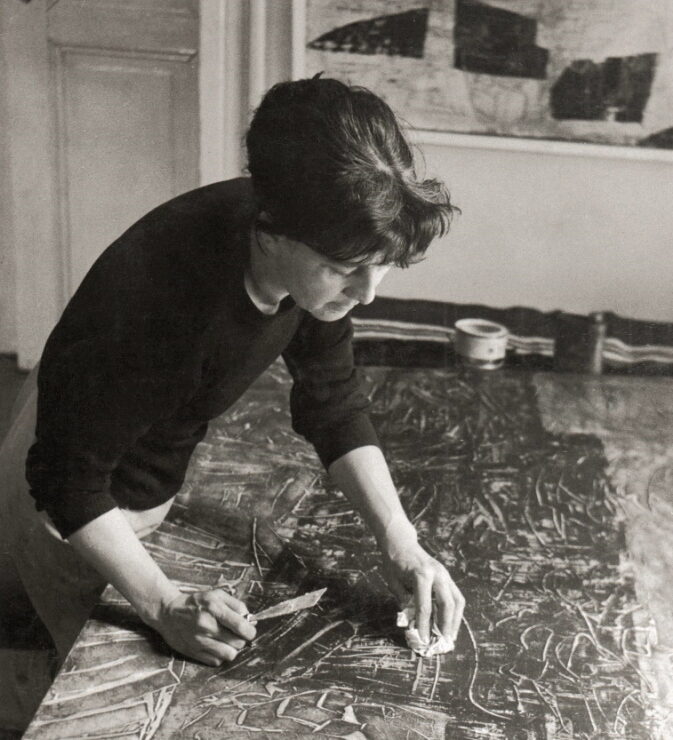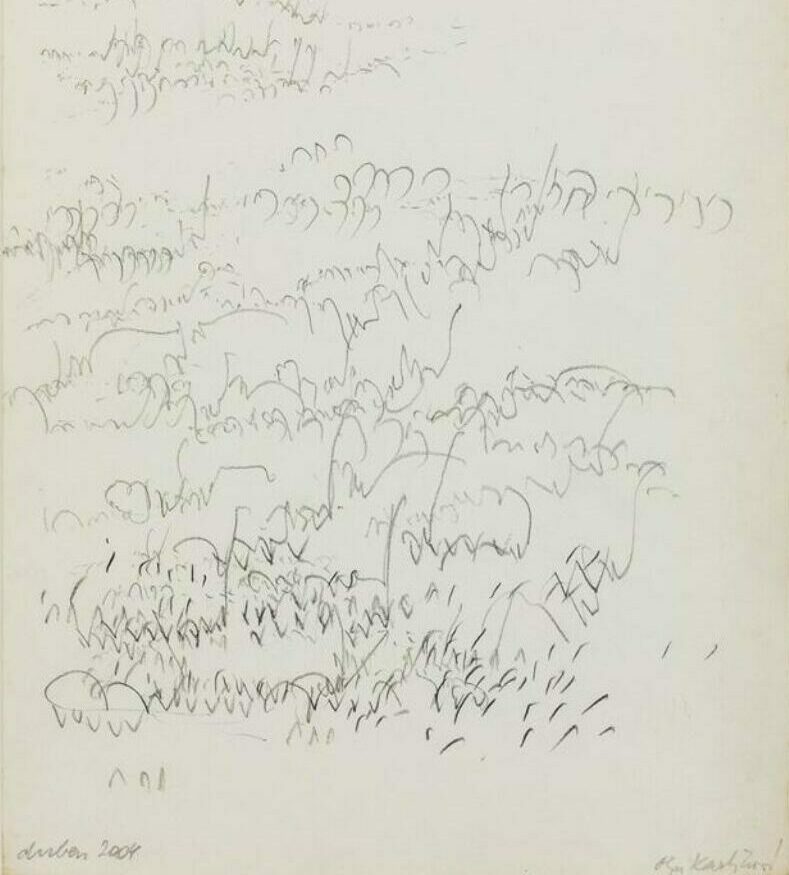Olga Karlíková
Born in Pardubice, Czechoslovakia, in 1916, Olga Karlíková developed a singular body of work at the intersection of drawing, listening, and observation. Trained in architecture and painting in Prague, she worked largely outside the official art structures of socialist Czechoslovakia. From the 1960s onward, she focused her practice on the transcription of bird vocalizations, creating ink drawings that resemble musical scores or scientific charts. These works do not seek to interpret or explain sound, but instead record it as gesture and rhythm—an attempt to translate what is heard into what can be seen.
Rooted in patient field observation and quiet attention to the natural world, Karlíková’s work resonates with experimental practices in sound and notation developed by contemporaries such as John Cage,and Milan Grygar. She approached listening as a creative act, and drawing as a form of thinking in time.
Alongside these sound-based drawings, she produced minimalist landscapes and gestural compositions shaped by movement and repetition. Neither abstract nor representational, her practice defied stylistic categories and reflected a deep sensitivity to the cycles and patterns of nature.
Although long under-recognized internationally, her work has gained visibility in recent years through exhibitions at the National Gallery in Prague and Centre Pompidou, Paris.

